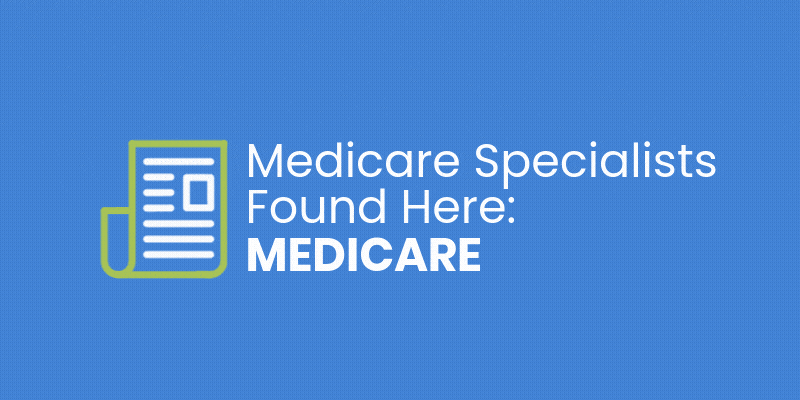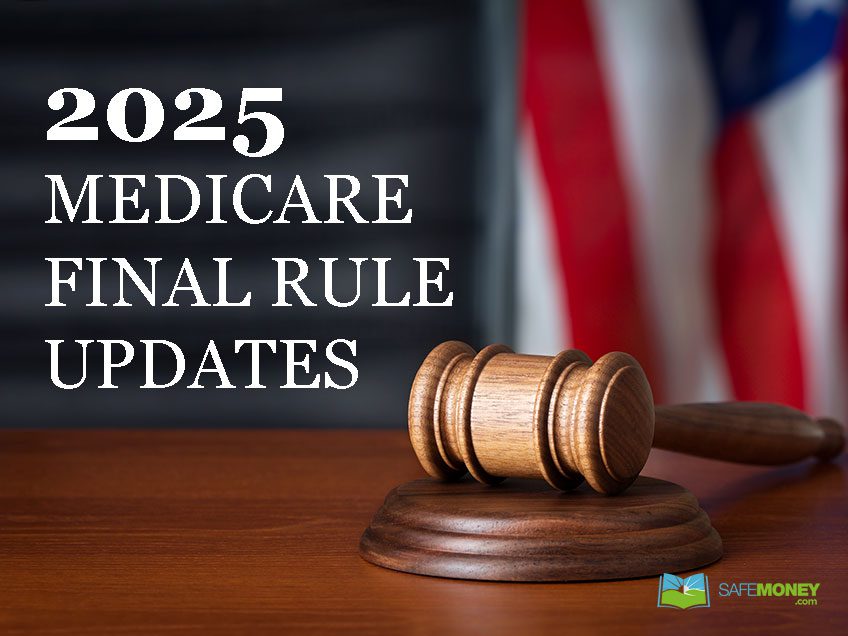
Every year, Medicare Open Enrollment runs from October 15 through December 7, and every year, millions of retirees miss the deadline. Maybe life got busy, health issues came up, or you simply didn’t realize how quickly the window would close. Whatever the reason, if you’re reading this shortly after Open Enrollment ended—or already into the new year—you are not out of options.
The period immediately after Open Enrollment is one of the most important times for retirees to assess their coverage, identify potential gaps, and make a plan for the new plan year. Even though you can’t make the same changes you could during the fall enrollment window, you still have meaningful opportunities to improve your Medicare coverage, reduce out-of-pocket costs, and protect your retirement income.
Below, we break down exactly what retirees can do after missing Medicare Open Enrollment and how to move forward with clarity and confidence. Read More

Medicare shouldn’t feel like a moving target — but December is the month when many retirees discover that their health coverage, drug plan, or out-of-pocket costs will shift on January 1. And even small gaps in coverage can lead to significant, unexpected expenses in the new year.
A December Medicare checkup is one of the most important year-end steps retirees can take to protect their retirement income, avoid unnecessary premiums, and ensure their healthcare fits their evolving needs. The good news? A quick review now can prevent costly surprises later.
Here is a clear, retirement-focused Medicare checklist designed to help you review what matters most before the calendar resets. Read More

Why Health and Wealth Are More Connected Than Ever
When planning for retirement, most people focus on saving enough money to live comfortably. But there’s one expense that catches many retirees off guard — healthcare.
As people live longer, healthcare becomes one of the largest and most unpredictable retirement costs. And without careful planning, medical expenses can quietly drain even the best-built nest egg.
This Financial Planning Awareness Month, it’s time to connect the dots between your healthcare strategy and your retirement income plan. Read More

October 15 to December 7: Your Window to Make Changes
Today marks the start of Medicare’s Annual Election Period (AEP)—October 15 through December 7. During this time, beneficiaries can review and adjust health and prescription drug plans for the coming year.
Any changes you make now will go into effect January 1, 2026.
Missing this window could leave you stuck in a plan that’s no longer optimal—or paying higher charges in some cases. Read More

Retirement Isn’t a Set-It-and-Forget-It Plan
You’ve worked hard, saved diligently, and maybe even built a retirement income plan. But even well-prepared retirees can be blindsided by unexpected financial challenges.
Retirement is full of moving parts—some predictable, others not. And while market fluctuations and inflation get the headlines, many retirees are caught off guard by less obvious threats: tax traps, healthcare costs, longevity risk, and unrealistic spending expectations.
If you want peace of mind in retirement, it’s essential to anticipate what could go wrong and take steps to protect yourself now. Read More

As Americans approach retirement, two of the most critical pieces of the financial puzzle come into focus—healthcare coverage and guaranteed income. While these two concerns are often addressed separately, the strategic integration of Medicare and annuities can create a powerful, synergistic retirement plan. Done right, this pairing can help retirees reduce financial uncertainty, protect their nest egg, and ensure lasting peace of mind.
In this article, we’ll explore how Medicare and annuities complement each other, how to maximize their combined benefits, and why smart retirees are using this strategy to navigate retirement with confidence. Read More

Retirement is a time to enjoy the fruits of your labor—but making the right decisions beforehand is critical to achieving a financially secure and stress-free future. Among the many moving parts of retirement planning, three key areas stand out as pillars of long-term stability: Social Security, Medicare, and Life Insurance.
These components are closely linked to your quality of life in retirement. If you make smart choices in each of these areas, you’ll be far better positioned to protect your health, wealth, and loved ones. This article explores these three core decisions and offers guidance to help you make confident, informed choices for your retirement years.

Medicare Open Enrollment happens every year from October 15 to December 7. If you’re enrolled in Medicare, this is your chance to review your coverage and make changes for the upcoming year — starting January 1, 2026.
Whether you want to switch your Medicare Advantage plan, change your drug coverage, or go back to Original Medicare, here’s what you need to know for 2026 — including key updates and cost changes.
What Is Medicare Open Enrollment?
Medicare Open Enrollment (also called the Annual Election Period) is when you can:
- Switch between Original Medicare and Medicare Advantage
- Change from one Medicare Advantage plan to another
- Enroll in, drop, or switch Part D (prescription drug) plans
Any changes you make will take effect on January 1, 2026.
What’s New for 2026?
There are a few important updates to Medicare for 2026. Here’s a breakdown:
✅ Higher Part B Costs
- Monthly Premium (Standard): Estimated to rise to $206.50 (up from $185 in 2025)
- Annual Deductible: Projected to be $288 (up from $257)
These increases will affect most Medicare beneficiaries, especially those on Original Medicare.
✅ Part A Deductible Increases
- The hospital deductible is expected to rise to $1,716 (up from $1,676 in 2025)
This affects those who need inpatient hospital stays under Original Medicare.
✅ Changes to Medicare Advantage (Part C)
- The maximum out-of-pocket cost for in-network services is going down to $9,250 (was higher in 2025)
- Many Advantage plans may offer added benefits, but check each plan to compare
✅ Part D (Prescription Drug) Updates
- Out-of-pocket cap: Now set at $2,100 for the year (up from $2,000 in 2025)
- Plan deductible limit: Increases to $615 (up from $590)
This means drug coverage could cost a bit more, but there’s still a cap on what you’ll pay out-of-pocket.
✅ Prescription Payment Plan (New Feature)
If you have high drug costs, you can now spread payments out over the year instead of paying all at once. This Monthly Prescription Payment Plan (MPPP) will automatically renew in 2026 unless you opt out.
✅ Higher Costs for High Earners (IRMAA)
If your income is above a certain level, you’ll pay more for Part B and Part D. These income-based surcharges are increasing again in 2026.
What’s Staying the Same?
- The Open Enrollment dates: October 15 – December 7
- You can still change Medicare Advantage and Part D plans during this time
- If you’re already in a Medicare Advantage plan, you’ll also have a second chance to make one change between January 1 and March 31
How to Prepare for Enrollment
Here are some tips to get ready:
1. Review Your Current Plan
Look at how much you paid for premiums, deductibles, and copays this year. Did your plan cover your doctors and prescriptions?
2. Compare Plans Online
Use the Medicare Plan Finder
tool to see what’s available in your area.
3. Check for Changes
Plans change every year — check your Annual Notice of Change (ANOC) letter for 2026 updates.
4. Watch for Mail
You’ll receive information from Medicare, your current plan, and any new plans in your area.
5. Ask for Help
Talk to a licensed Medicare agent, or contact your State Health Insurance Assistance Program (SHIP) for free help.
Final Thoughts
Medicare can change year to year — and 2026 brings several cost increases and a few program updates. The good news is that you have options. Take time to review your plan, compare others, and make the best choice for your health and your wallet.
Need help? Talk to a licensed agent or visit Medicare.gov
Seeking Personalized Guidance?
If you’re looking for tailored advice, reach out to a financial professional. Visit our “Find a Medicare Specialist” section to connect with an expert directly. For a personal referral for your first appointment, call us at 877.476.9723 or contact us here to schedule an appointment with an independent, trusted, and licensed Medicare specialist.
🧑💼 Authored by Brent Meyer, founder and president of SafeMoney.com, with over 20 years of experience in retirement planning and annuities. Discover more about my extensive background and expertise here. I am not a Medicare specialist. The information provided in this article is based on research and should not be considered professional advice. For personalized Medicare guidance, please consult a licensed Medicare specialist or financial advisor.
Sources
MedicareResources.org
Kiplinger – Medicare Changes for 2026
Kiplinger – 2026 IRMAA Projections
Medicare.gov

In 2025, Medicare will implement significant changes designed to enhance healthcare access and affordability. These updates aim to benefit beneficiaries, especially those with high prescription drug costs and chronic conditions. Stay informed to maximize your Medicare benefits and ensure you are prepared for the upcoming changes.
Significant Medicare Changes in 2025: What Beneficiaries Need to Know
As Medicare continues to evolve, the year 2025 will introduce several significant changes aimed at improving healthcare access and affordability for its beneficiaries. These changes are set to bring about considerable benefits, especially for those with high prescription drug costs and chronic conditions. Here’s an in-depth look at the key updates coming to Medicare in 2025.
1. Out-of-Pocket Spending Cap for Prescription Drugs
Read More

If you have just turned 65, then you might be eligible to enroll in Medicare. Medicare is a health insurance program offered by the federal government to retirees and others who qualify.
There are many options for health coverage with Medicare. It’s good to understand a little bit about these options, as they may be confusing, or at least at first.
To help you get started, here are some basic questions that you probably have about Medicare – and what different things can entail.
Read More



















